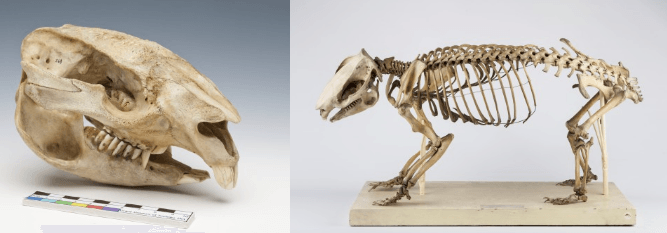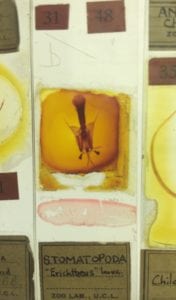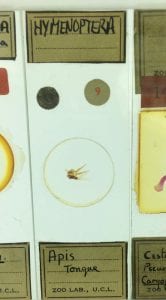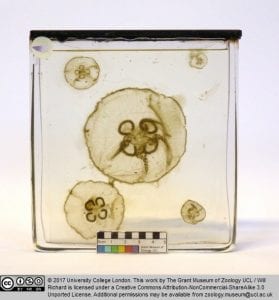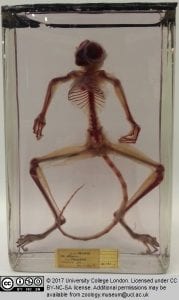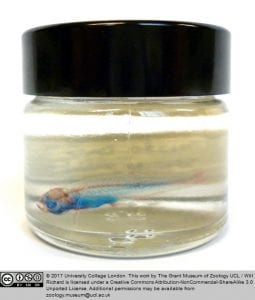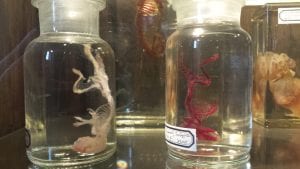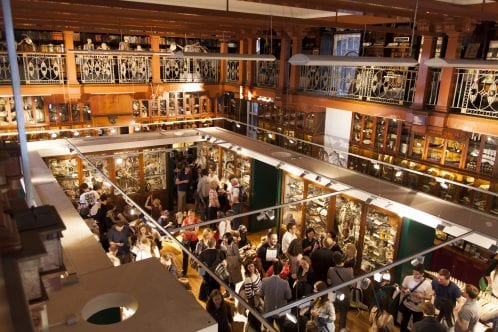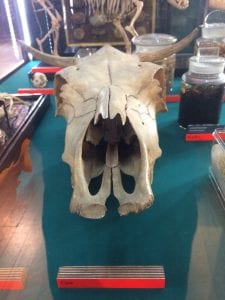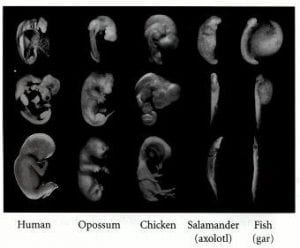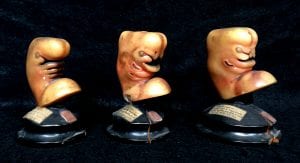Why did Ancient Egyptians Love Cats?
By Josie Mills, on 17 April 2018
You really wouldn’t want to get into a cat versus dog argument with me (cats are superior obviously) and as it turns out the Ancient Egyptians agree! Ancient Egyptian iconography is packed with representations of cats — from tomb paintings to statues, their feline friends were everywhere. But did they always love cats? And why did they love them so much?
It’s thought that humans and cats began interacting in Ancient Egypt after 4000 BCE as this is when cats start to appear in visual representations like hieroglyphs and tomb paintings. It’s unlikely that these cats were fully domesticated and were probably one of the two species of wild cat that existed in Egypt at the time: the Jungle Cat and the African Wild Cat. Interestingly, although there was more than one type of cat, Egyptians only had a single word for feline, the onomatopoeic ‘miu’ or ‘miit’, meaning literally ‘he or she who mews’.

A fragment of the wall painting from the tomb of Nebamun, which is dated to 1350 BCE. The scene shows Nebamun fishing in the marshes with his wife and daughter. Just to the left of his right knee is a cat amongst the wildfowl. (Courtesy of the British Museum © The Trustees of the British Museum. Museum number EA37977)
Between 4000 – 2000 BC humans and cats gradually began to live in closer company. Archaeologists believe that the main driving force behind initial cat domestication was their usefulness as pest control. Ancient Egyptian economy was largely based on farming with grain and its distribution was important to many Egyptians livelihoods. Grain was held in buildings called granaries and people realised that granaries visited by roaming cats had fewer problems with vermin. These cats, who had initially just stopped off to snack on mice, were encouraged to stick around and treated with kindness — finally slinking their way into the domestic home around 2000 BC.
However, cats didn’t just chow down on small vermin like rodents; they were also known to kill poisonous snakes. Snakes were a real issue in Ancient Egypt and the presence of cats reduced the threat of poisoning. Through this behaviour, cats were perceived to have a protective nature which, combined with their ability to have lots of kittens, made them a symbol of the home, women, and fertility. Tomb paintings dated to the New Kingdom often feature cats as dedicated companions of women, usually seated under their chairs.

This image shows a wall painting from the tomb of Ipuy, at Deir el-Medina. Ipuy has a small kitten sitting on his lap whilst a cat sits under his wife’s chair (Image credit: https://www.nilemagazine.com.au/march-2015-archive/2015/3/22/ancient-egypts-best-dressed-cats)
Their representation in popular culture and usefulness around the home and workplace gave cats a prominent position in Egyptian society. Some people were even named after cats, Miut and Miit, Ta-mitt (female cat) and Pa-mitt (tom cat). Killing a cat was punishable by death, even if it was an accident, and when a family cat died it was common for its owners to shave their eyebrows as part of the mourning process. See I wasn’t kitten when I told you cats were important!
Cats also had a significant impact on religion in Ancient Egypt, despite being a relatively late addition to the Pantheon (c. 2000 – 1000 BC). The earliest representation of a cat or lion in Egyptian religion was the fur-midable Mafdet, a cat-like deity associated with justice and execution. Interestingly Mafdet probably translates as ‘runner’, and it’s possible she embodied a cheetah or jaguar.
Mafdet was followed by Sekhmet, meaning strength and ferocity, a lion-headed goddess. She played a key part in the Egyptian creation myth when Hathor, daughter of Ra, was transformed into Sekhmet to remind humans of the God’s power (seriously gruesome events ensued). She has a reputation as a ferocious deity but also a stalwart protector of the innocent.
Bastet is probably the most famous cat-headed goddess. Much more moderate than her predecessors, she was associated with fertility, womanhood, and the home. Bastet was a very popular goddess through to the Ptolemaic and Roman Periods in Egypt; she even had a cult centre of worship called Bubastis.
The Cult of the Cat was not restricted to Bubastis and spread across Ancient Egypt with large temples dedicated to the cat goddesses, which house and cared for hundreds of cats. Cats were even mummified in a similar way to humans and placed in temples after their death. The Petrie Museum has its very own mummified cat (sort of), which is part of the Langton Collection, a substantial bequest of artefacts that are all cat related. They were originally brought together by Mr and Mrs Langton, who excavated and worked in Egypt in the early twentieth century, who wanted to highlight the importance of the Cult of the Cat!

Mummified remains inside linen bandages shaped to look like a cat. An x-ray of this artefact revealed that it only contained two leg bones! Dated to the Late/Roman Period (Petrie Museum, 45976)
The popularity of cats in a religious context peaked during the Ptolemaic period (332 – 30 BC), when political unrest was rife across Egypt. One of the reasons that I know about this period (when I should really be concentrating on Neanderthals) is through playing the video game Assassin’s Creed Origins, which is set during the reign of the Ptolemies. The game is incredibly accurate and a recent update allows you to play in discovery mode, effectively turning Ancient Egypt into a virtual museum. One of my favourite features of the game are the little cats that weave around your feet as you explore towns and villages. These cats have sandy, light red brown or striped coats inspired by cats painted in tombs. Hilariously, and much to my initial frustration, cats can choose whether to interact with you or not! In my opinion greatly adding to the realistic nature of the game…

On the left a cat petting fail, on the right a cat petting success! Screenshots taken from Assassin’s Creed Origins made by Ubisoft
There’s ample evidence that Ancient Egyptians loved cats and the prominent role they played in day-to-day life and religious worship. Five thousand years later I’m not sure how much has changed. Incidentally if you’d like to read more about cats in a medieval context (of course you would!) check out my fellow engager Arendse’s blog post.
References
Challis, D. 2015. Miw: the Langton Cat Collection. In: Stevenson, A (ed.) Petrie Museum of Egyptian Archaeology Characters and Collections. UCL Press: London 72-74
Malek, J. 1993. The Cat in Ancient Egypt. British Museum Press: London
https://en.wikipedia.org/wiki/Cats_in_ancient_Egypt
 Close
Close









